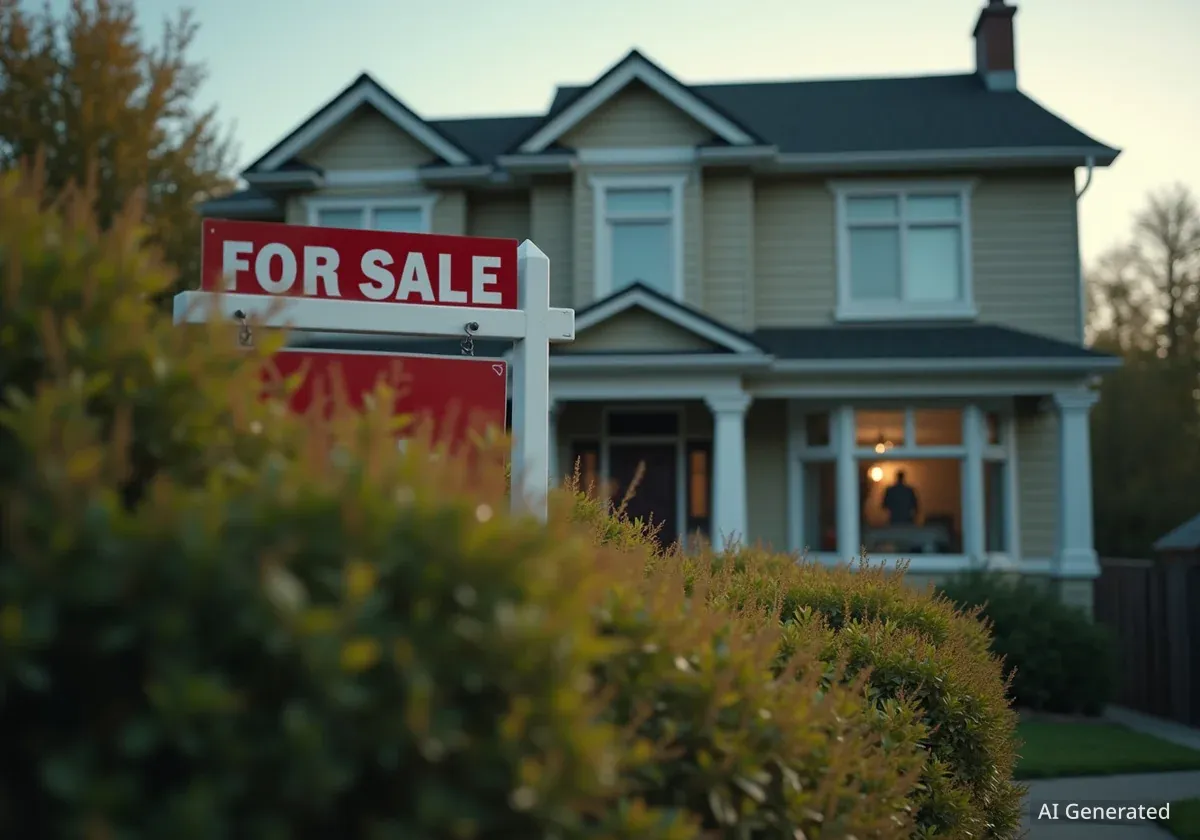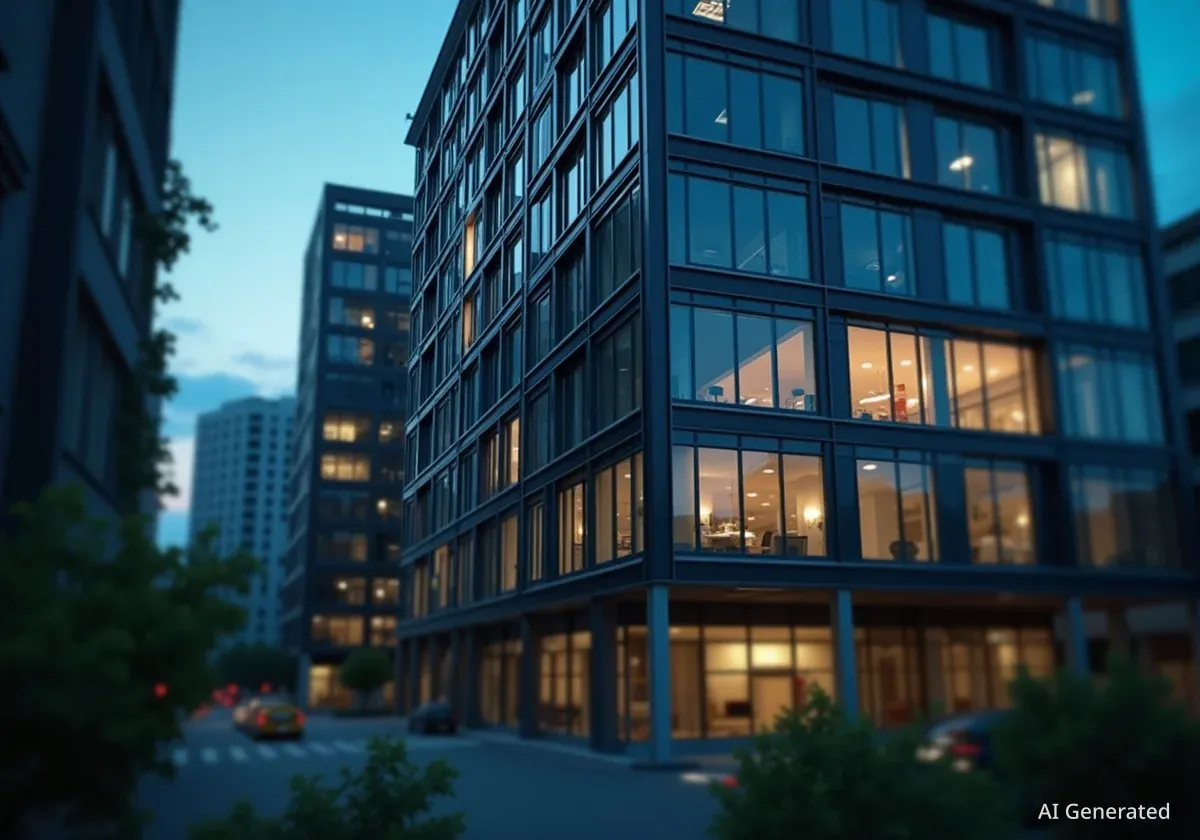A new analysis from leading economists at Moody's Analytics identifies an outdated tax law as a primary reason millions of older Americans are not selling their large homes. This creates a significant inventory shortage that affects younger families and first-time buyers across the country.
The report argues that the current capital gains tax exclusion for home sales, unchanged since 1997, imposes a heavy financial penalty on seniors who wish to downsize, effectively freezing a crucial segment of the housing market.
Key Takeaways
- Economists identify a 1997 tax law as a major cause of the current housing inventory shortage.
- Nearly 6 million older Americans live in homes larger than they need, deterred from selling by high capital gains taxes.
- The current tax exclusion is $250,000 for individuals and $500,000 for couples, figures that have not been adjusted in nearly 30 years.
- Analysts propose indexing these limits to inflation or home price growth to unlock housing supply and improve market mobility.
An Unintended Consequence of a 1997 Tax Law
The core of the housing market's current gridlock stems from the Taxpayer Relief Act of 1997, according to a report by Moody's Analytics Chief Economist Mark Zandi and Deputy Chief Economist Cristian deRitis. This legislation established a capital gains exclusion of $250,000 for single individuals and $500,000 for married couples on the profit from selling a primary residence.
While beneficial at the time, these thresholds have remained static for almost three decades. Over the same period, home values have soared, particularly in major metropolitan areas. This means a growing number of long-time homeowners now face substantial tax bills if they choose to sell.
What is a Capital Gains Tax?
A capital gains tax is a tax on the profit (or "gain") you make from selling an asset, such as a house. The profit is calculated by subtracting the original purchase price (and cost of improvements) from the sale price. The 1997 law allows homeowners to exclude a certain amount of this profit from being taxed.
The Moody's analysis highlights the discrepancy. If the exclusion caps had been adjusted for home price appreciation since 1997, they would be significantly higher today. The report estimates the thresholds would now stand at approximately $885,000 for individuals and $1.77 million for couples.
The Economic Gridlock in the Housing Market
This outdated tax policy has created what economists call a "lock-in effect." Millions of older Americans, often empty-nesters, are effectively trapped in homes that are too large for their current needs. The financial disincentive to sell is simply too strong.
According to the report, this situation has led to a significant "misallocation" of housing resources. The study estimates that nearly 6 million older Americans reside in oversized houses. Simultaneously, younger, growing families are often forced into smaller living spaces, and many potential first-time homebuyers are unable to enter the market at all.
First-Time Buyers Face Hurdles
The lack of available starter and family-sized homes contributes to challenging market conditions. The median age of a first-time homebuyer has reached a historic high of 38, and recent data shows that senior citizens are currently more active in the homebuying market than both Gen Z and millennials combined.
This market paralysis is not just about individuals; it has broader economic consequences. Meredith Whitney, a prominent financial analyst, notes that baby boomers now own over 54% of U.S. homes, and a staggering 79% of these homeowners are mortgage-free. This financial security makes it even easier for them to age in place, further restricting the supply of homes for sale.
The Financial Case for Staying Put
To illustrate the problem, the Moody's report presents a common scenario: a widow living alone in a 2,800-square-foot family home. After decades of ownership, selling the house would result in a capital gain of $750,000.
Under current law, she can exclude the first $250,000 of that gain from taxes. However, she would still owe taxes on the remaining $500,000. At combined federal and state tax rates, her tax bill could easily exceed $100,000. This amount represents more than 20% of the money she would receive from downsizing.
"The disincentive to sell is strong," the authors write. Faced with such a large tax penalty, the more financially sound decision is often to remain in the house until death. At that point, her heirs would inherit the home with a "stepped-up cost basis," which resets the property's value for tax purposes and allows them to sell it without incurring the capital gains tax.
This tax incentive directly encourages older homeowners to hold onto their properties, even when they would prefer to move to a smaller, more manageable home.
Proposed Solutions and Broader Benefits
The most direct solution, according to Zandi and deRitis, is to update the tax code. They argue for indexing the capital gains exclusion caps to either inflation or, more appropriately, to the growth in home prices. Raising or even eliminating the caps would provide immediate relief and encourage homeowners to sell.
While changing the tax code would impact federal revenue, which is estimated at $6 billion to $10 billion annually from this tax, the report suggests the impact could be offset. Increased housing turnover would generate new revenue streams for local and state governments through transfer taxes and property taxes. Furthermore, it would stimulate economic activity in related sectors, such as real estate commissions and home remodeling.
Other potential benefits include:
- Increased Labor Mobility: When people can move more easily, they are more likely to relocate for better job opportunities, which boosts regional economic growth.
- Fairer Tax Burden: The report notes that the current tax often impacts middle-income homeowners in high-cost areas who experience a life event like a death or divorce, rather than the very wealthy who have financial tools to avoid such taxes.
- Reduced Administrative Burden: Updating the law would save millions of taxpayers and the IRS the trouble of tracking decades of home improvement receipts and records.
The economists suggest that even a temporary, time-limited adjustment to the exclusion could be enough to "jump-start" the market. They calculate that a 25% increase in listings from this change would simply return the market to more normal, pre-crisis sales levels without causing a destabilizing crash in prices.





